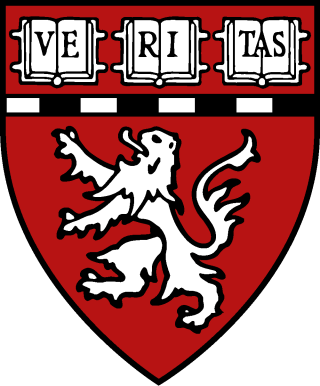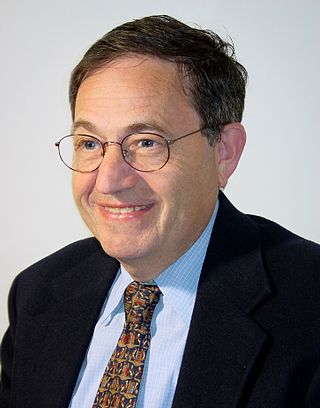Related Research Articles

Harvard Medical School (HMS) is the medical school of Harvard University and is located in the Longwood Medical Area in Boston, Massachusetts. Founded in 1782, HMS is one of the oldest medical schools in the United States, and provides patient care, medical education, and research training through its 15 clinical affiliates and research institutes, including Massachusetts General Hospital (MGH), Boston Children's Hospital, Dana–Farber Cancer Institute, Brigham and Women's Hospital, Beth Israel Deaconess Medical Center, Mount Auburn Hospital, McLean Hospital, Cambridge Health Alliance, The Baker Center for Children and Families, Spaulding Rehabilitation Hospital, and others

Massachusetts General Hospital is a teaching hospital located in the West End neighborhood of Boston, Massachusetts. It is the original and largest clinical education and research facility of Harvard Medical School/Harvard University, and houses the world's largest hospital-based research program with an annual research budget of more than $1.2 billion in 2021. It is the third-oldest general hospital in the United States with a patient capacity of 999 beds. Along with Brigham and Women's Hospital, Mass General is a founding member of Mass General Brigham, formerly known as Partners HealthCare, the largest healthcare provider in Massachusetts.

Arnold Seymour Relman — known as Bud Relman to intimates — was an American internist and professor of medicine and social medicine. He was editor of The New England Journal of Medicine (NEJM) from 1977 to 1991, where he instituted two important policies: one asking the popular press not to report on articles before publication and another requiring authors to disclose conflicts of interest. He wrote extensively on medical publishing and reform of the U.S. health care system, advocating non-profit delivery of single-payer health care. Relman ended his career as professor emeritus at Harvard Medical School in Boston, Massachusetts.
Philip O. Alderson, M.D. served as Dean of Saint Louis University School of Medicine from 2008 through 2016 and as vice-president for Medical Affairs from 2009 through 2016. He was succeeded in both of these roles by Kevin Behrns, M.D. on January 1, 2017. He was formerly James Picker Professor and Chairman of the Department of Radiology at the Columbia University College of Physicians and Surgeons, Radiologist-in-Chief at NewYork-Presbyterian Hospital/Columbia University Medical Center and President of the Medical Board at New York-Presbyterian. Alderson currently is chair of the Board of Directors of Casa de Salud St Louis, a nonprofit organization providing medical and mental health care to immigrants and the underserved in the St Louis region.
Daniel B. Kopans, MD, FACR is a radiologist specializing in mammography and other forms of breast imaging.
Felix G. Fleischner was an Austrian-American radiologist from Boston. The Fleischner Society for thoracic imaging and diagnosis is named after him.
Ralph Weissleder is an American clinician scientist.
Charles "Doc" Whelan was an American football player and coach and physician. He served as the head football coach at Tufts College—now Tufts University—for three stints and at Boston University from 1921 to 1925, compiling a career college football record of 54–68–7. Whelan also coached track at Harvard University. He died after a brief illness in 1945.

Ferenc Andras Jolesz was a Hungarian-American physician and scientist best known for his research on image guided therapy, the process by which information derived from diagnostic imaging is used to improve the localization and targeting of diseased tissue to monitor and control treatment during surgical and interventional procedures. He pioneered the field of Magnetic Resonance Imaging-guided interventions and introduced of a variety of new medical procedures based on novel combinations of imaging and therapy delivery.
Herbert Leroy Abrams was an American medical doctor. After establishing a career as a radiologist at Harvard Medical School and the Stanford University School of Medicine, Abrams became involved in the anti-nuclear movement. He served on the national board of directors of Physicians for Social Responsibility and he was the founding vice president of International Physicians for the Prevention of Nuclear War (IPPNW).
Alice Ettinger was a prominent radiologist and professor of medicine. A native of Germany, Ettinger trained there before coming to the Tufts University School of Medicine. She had come for a visit to Boston to demonstrate the spot film imaging technique, and she decided to stay at Tufts permanently.
James Frederick Brailsford MD, FRCP was a British radiologist, known as the founder and first president of the British Association of Radiologists and as the co-discoverer of the Morquio syndrome.
Brailsford had known hardship in his student days. His parents, ‘just honest, simple folk’, could not afford him a higher education. It was his work as a technician in the public health department of Birmingham, for which he had trained the hard way in technical schools and evening classes, which attracted the attention of his chief. Sir John Robertson encouraged him to enter the Birmingham Medical School in 1918 when he was already aged thirty and had given distinguished service for four years as an army radiographer in the First World War.
Daniel David Federman, was an American endocrinologist and the Carl W. Walter Distinguished Professor of Medicine and the dean for medical education at Harvard Medical School. He helped change medical education at through its New Pathway curriculum around the early 1990s, and his work helped create the field of genetic endocrinology. Federman also worked for over thirty years at Boston's Brigham and Women's Hospital, a Harvard Medical School teaching hospital in the Longwood Medical and Academic Area.
Mary Stuart Fisher was an American radiologist who won the Marie Curie Award of the American Association for Women Radiologists. She spent the majority of her career as a professor of radiology at Temple University.
Tina Young Poussaint is a professor of radiology at the Harvard Medical School and a Neuroradiologist at the Boston Children's Hospital. In 2010 she served as President of the American Society of Pediatric Neuroradiology.
Granville C. Coggs was an American medical doctor, radiologist, U.S. Army Air Force/U.S. Air Force/U.S. Air Force Reserves officer, and trained bombardier pilot with the 477th Bombardment Group attached to the famed Tuskegee Airmen. He was one of the 1007 documented Tuskegee Airmen Pilots.
Dr. Morris Simon, MB, BCH, (1926–2005) was a South African-born American radiologist, professor, and inventor. His medical practice was based primarily at Beth Israel Deaconess Medical Center, Boston, where he specialized in chest radiology. He is also credited with a number of medical inventions, including a flexible filter for dissolving blood clots, and innovations that streamlined patient care and records holding.
Keith Johnson is an American neurologist and radiologist. He is Professor of Radiology and Neurology at the Harvard Medical School, and Associate Radiologist and Director of Molecular Neuroimaging at the Massachusetts General Hospital. He also is co-director of the Neuroimaging Program of the Massachusetts Alzheimer’s Disease Research Center.
Beryl Rice Benacerraf was an American radiologist and professor of obstetrics, gynecology and reproductive biology and radiology at Harvard Medical School. She was a pioneer in the use of prenatal ultrasound to diagnose fetal abnormalities, including Down syndrome. In 2021, she was recognized as a "Giant in Obstetrics and Gynecology" by the American Journal of Obstetrics & Gynecology.
Robert R. Edelman is an American radiologist.
References
- ↑ Who's Reading Your X-Ray? By ANDREW POLLACK, Published: November 16, 2003, New York Times
- ↑ Medical Tests Add Outsourcing Twist, By Lindsey Tanner, The Associated Press, centredaily.com on December 6, 2004
- ↑ Clinical Application of Magnetic Resonance Imaging in the Abdomen, pp 111, Endoscopy and gastrointestinal radiology By Gregory G. Ginsberg, Michael L. Kochman, Elsevier Health Sciences, 2004
- ↑ Sanjay Saini, MD, Professor of Radiology, Harvard Medical School Archived 2009-12-12 at the Wayback Machine